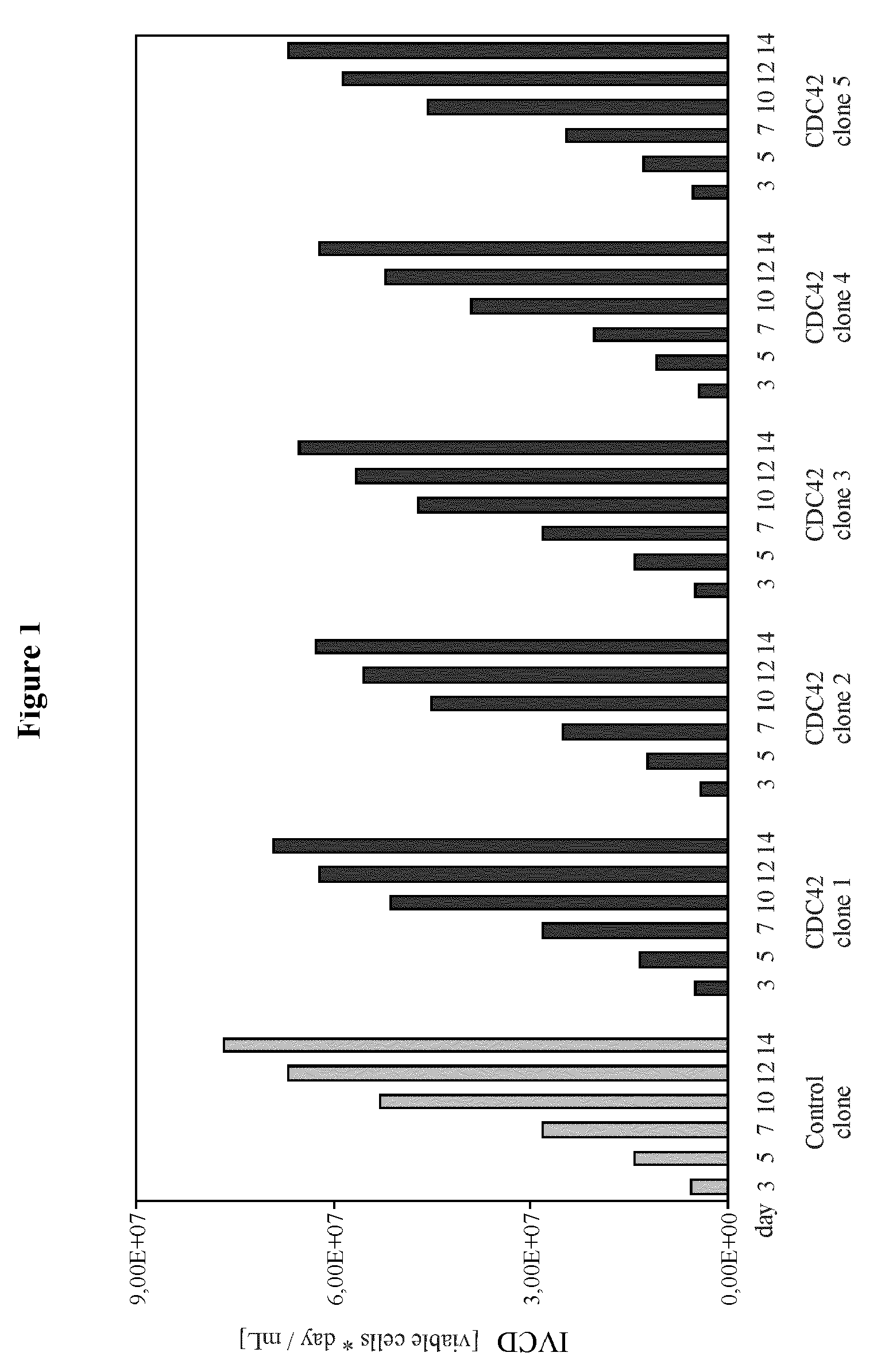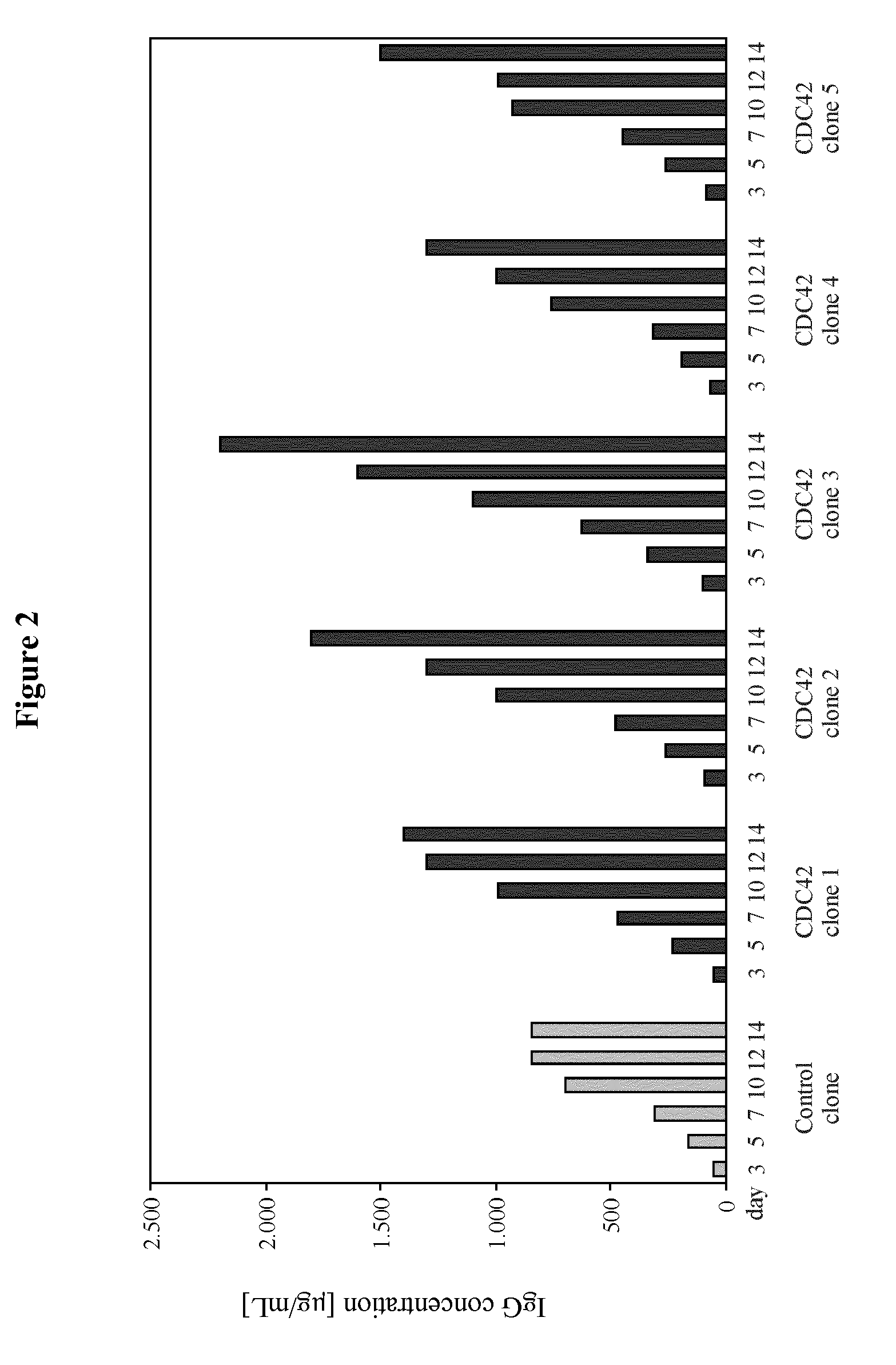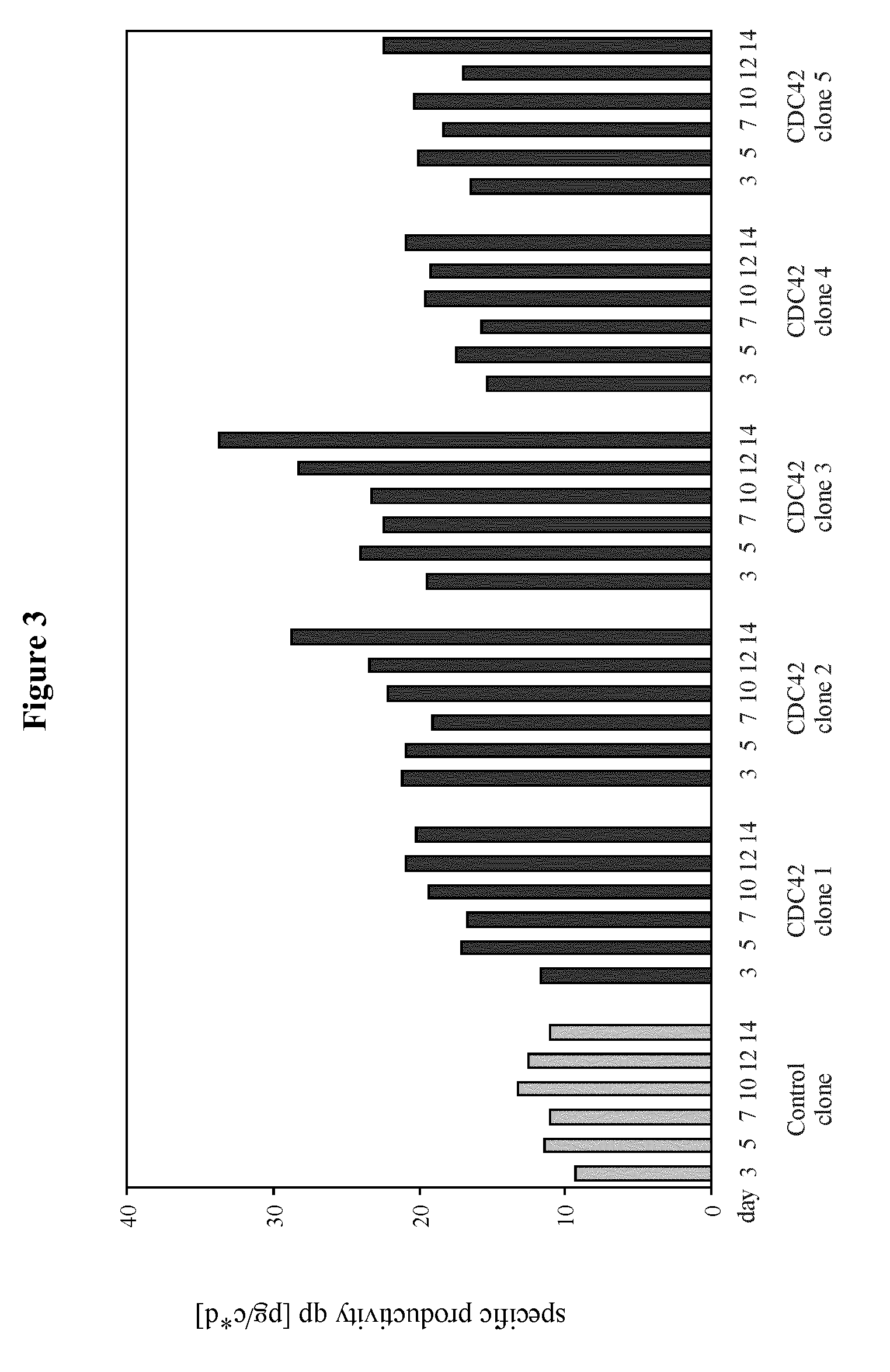Enhancement of protein production yield mediated by a fast shuttling CDC42 GTPase
a technology of cdc42 and gtpase, which is applied in the field of recombinant therapeutic proteins, can solve the problems of intracellular accumulation of protein products, other bottlenecks, and even reducing productivity
- Summary
- Abstract
- Description
- Claims
- Application Information
AI Technical Summary
Benefits of technology
Problems solved by technology
Method used
Image
Examples
example 1
[0189]The example describes the effect of heterologous CDC42F28L expression on growth properties and productivity of a pre-existing antibody producer line.
Cell Lines
[0190]The recombinant cell line CHO-DG44-IgG was established by stable transfection of the dihydrofolate reductase-deficient CHO cell line, CHO / DG44 with an expression vector PBGABEX2 containing expression cassettes comprising nucleotide sequences encoding light and heavy chain of the therapeutic monoclonal antibody. The cell line has undergone two subsequent cloning rounds ensuring clonality and homogenetity of expression within this clone. Generation of the CDC42F28L engineered cell lines started from this pre-existing producer clone. The cell line was maintained in serum-free medium C8862 (SAFC).
Design of the CDC42F28L Gene
[0191]The amino acid sequence for CDC42 was deduced from the mouse sequence (GenBank Accession No. GenBank: AAC00028.1-191 amino acids). The sequence was reverse translated, the phenylalanine at pos...
example 2
[0201]The example describes the generation of starter cell lines of the CHO-K1 lineage engineered for expression of CDC42F28L or for joint expression of CDC42F28L and E1B of a C-group adenovirus. It also describes the application of these starter cell lines compared to naïve starter cells to generation of high producer lines and the effect of the different starter cell lines on productivity.
Cell Lines
[0202]The development started from CHO-S cells, a CHO K1 derivative, adapted to suspension culture with a known linage history (Life Technologies, US). In a first step, these cells were stably transfected to express the CDC42F28L alone or CDC42F28L in combination with the E1B of adenovirus 5 to generate engineered starter cell lines. The cell lines were cultivated in chemically defined medium in suspension.
Construction of the CDC42F28L Expression Plasmid
[0203]The expression plasmid EF2-M1-gfpN1 contains a bicistronic expression cassette encoding for CDC42F28L and gfp (see example 1) For...
example 3
[0214]The example describes the effect of heterologous CDC42F28L and E1B expression on growth properties and productivity of a pre-existing antibody producer line.
Cell Lines
[0215]The recombinant cell line CHO-DG44-T was established by stable transfection of the dihydrofolate reductase-deficient CHO cell line, CHO / DG44 with an expression vector PBGABEX2 containing expression cassettes comprising nucleotide sequences encoding light and heavy chain of the therapeutic monoclonal antibody Trastuzumab. The cell line has undergone two subsequent cloning rounds ensuring clonality and homogenetity of expression within this clone. Generation of the CDC42F28L / E1B engineered cell lines started from this pre-existing producer clone. The cell line was maintained in serum-free medium C8862 (SAFC).
Engineering of Antibody-Producing CHO-IgG Cells with CDC42 / E1B
[0216]CHO-IgG cells stably expressing the IgG1-type therapeutic antibody Trastuzumab were stably transfected with the expression vector EF2CDC...
PUM
| Property | Measurement | Unit |
|---|---|---|
| time | aaaaa | aaaaa |
| time | aaaaa | aaaaa |
| time | aaaaa | aaaaa |
Abstract
Description
Claims
Application Information
 Login to View More
Login to View More - R&D
- Intellectual Property
- Life Sciences
- Materials
- Tech Scout
- Unparalleled Data Quality
- Higher Quality Content
- 60% Fewer Hallucinations
Browse by: Latest US Patents, China's latest patents, Technical Efficacy Thesaurus, Application Domain, Technology Topic, Popular Technical Reports.
© 2025 PatSnap. All rights reserved.Legal|Privacy policy|Modern Slavery Act Transparency Statement|Sitemap|About US| Contact US: help@patsnap.com



